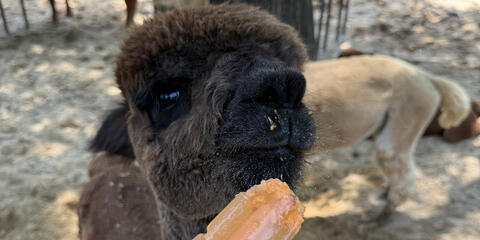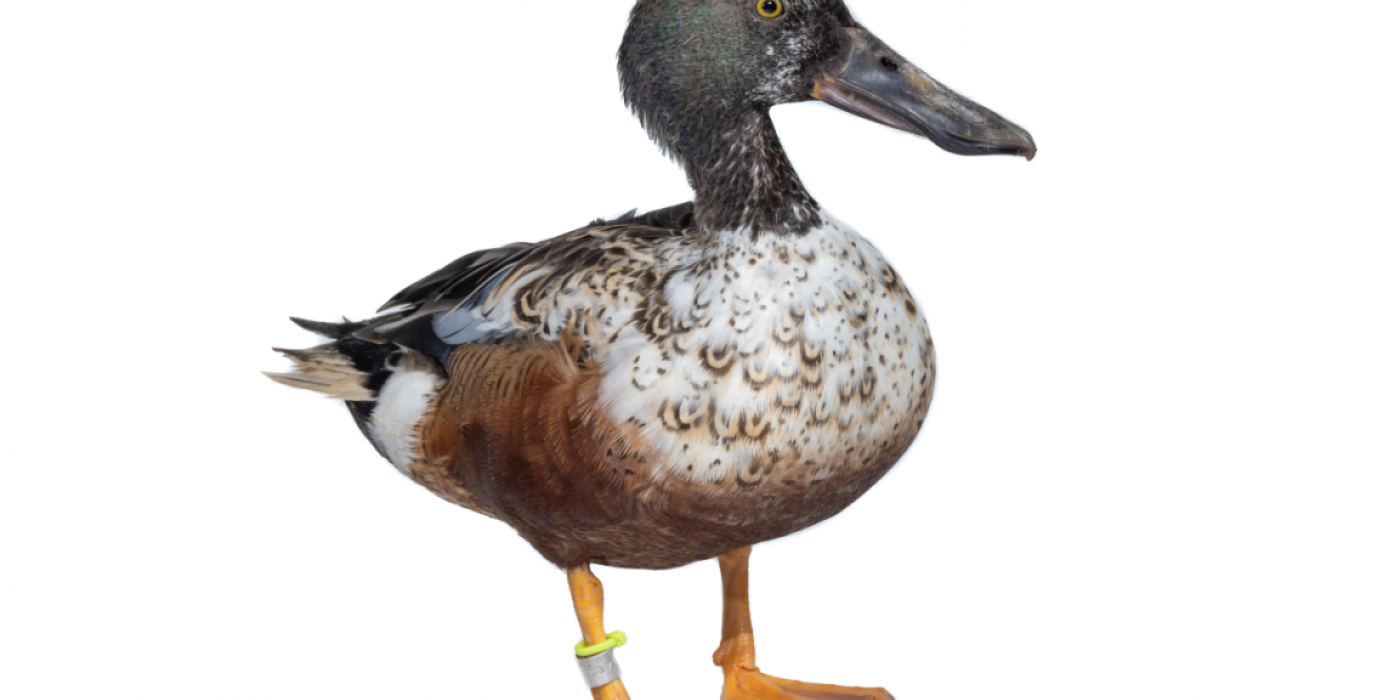Physical Description
Probably the easiest way to identify a northern shoveler is by looking for its long, shovel-shaped bill. In males, the bill is dark gray, and in females, the bill is lighter gray with an orange edge. During the breeding season, males display dark green head plumage and white and chestnut-brown feathering on their bodies; in the winter, they become more dull-colored overall. Females have light brown feathering all over their bodies. Both sexes have a bright green wing patch that can be seen during flight.
Size
From the tip of their bill to the tip of their tail, northern shovelers can reach about 19 inches (48 centimeters) long, with their unique bill measuring about 2.5 inches (6.3 centimeters) by itself. Adults weigh an average of 1.5 pounds (0.7 kilograms). Their wingspan is about 31 inches (79 centimeters) long.
Native Habitat
During the breeding season, northern shovelers are usually found in shallow freshwater lakes, ponds and marshes that have plenty of emergent vegetation like reeds. These ducks winter in fresh and brackish waters on a coast or lagoon.
Northern shovelers are found in the Americas and Europe year-round. Their winter range also extends into parts of Africa, India, and southeast Asia.
Lifespan
Communication
Males make a wheezy "took-took" sound while courting. Females will respond with an equally nasally "quack."
Food/Eating Habits
Their diet includes aquatic plants like duckweed, and small aquatic invertebrates like insects, snails, crustaceans, seeds, tadpoles, spiders and fish.
Northern shovelers are dabbling ducks, usually foraging for food near the shallow water’s surface. Their unique shovel-like bill is lined with comb-like projections, or lamellae, which allow them to sift through marsh waters for tiny crustaceans and seeds. These ducks will also swim together in large circles to stir up the sediment at the bottom of the pond or stream and lure out crustaceans.
Social Structure
Unlike many duck species that may pair up with multiple partners during the breeding season, the northern shovelers are seasonally monogamous. Several males will court a female. Each male will swim or fly a short way away in an attempt to get the female to follow him. A female northern shoveler will fly away with her chosen mate. Once a pair bond is formed, it can remain until the birds leave the breeding grounds in the fall.
While on breeding grounds, these ducks live in solitary pairs or small, loose groups. During the winter they remain in small flocks; at stopover sites during migration, they may gather in the hundreds.
Reproduction and Development
A female northern shoveler will build her nest on dry land that is close to the water’s edge. She twists her body against the ground to form a shallow depression, or scrape, which she lines with grasses and her feathers.
Females usually lay 9 to 11 eggs, which are incubated for about 24 days. If a predator approaches the nest, the female will defecate on her eggs and then flush off the nest. It’s believed the defecation is an attempt to deter the predator. Flushing from the nest is a distraction and an attempt to lead the predator away.
Within hours of hatching, ducklings will follow their mother away from the nest and to the nearby water. The newly hatched ducklings’ bills are fairly small at birth, but elongate as the ducklings reach adulthood. The ducklings are able to fly after about six weeks.
Conservation Efforts
Globally, northern shoveler numbers have been decreasing. However, starting in the 1980s, the North American population has been significantly increasing. In the United Kingdom, these ducks are threatened by habitat loss and predation by American mink, an introduced species.
Like many birds, northern shovelers are at risk of avian influenza. They are also a commonly hunted species globally.
Help this Species
- Be a smart consumer. Choose products made with sustainable ingredients, such as Smithsonian certified Bird Friendly coffees, which support farmers striving to limit their impact on wildlife and habitat.
- Consider going meat-free one day each week to help reduce the demand on the livestock industry and decrease your carbon footprint!
- Are you a hunter? You can be an incredible ally for conservation! Check the conservation status of the animals you hunt and use methods that don’t impact other animals.
- Protect local waterways by using fewer pesticides when caring for your garden or lawn. Using fertilizers sparingly, keeping storm drains free of litter and picking up after your pet can also improve watershed health.
- Never release balloons. Animals often mistake them for food or become entangled in their strings. Looking for an alternative? Try blowing bubbles instead!
Animal News

Keeping the Farm Animals Cool with Frozen Treats



